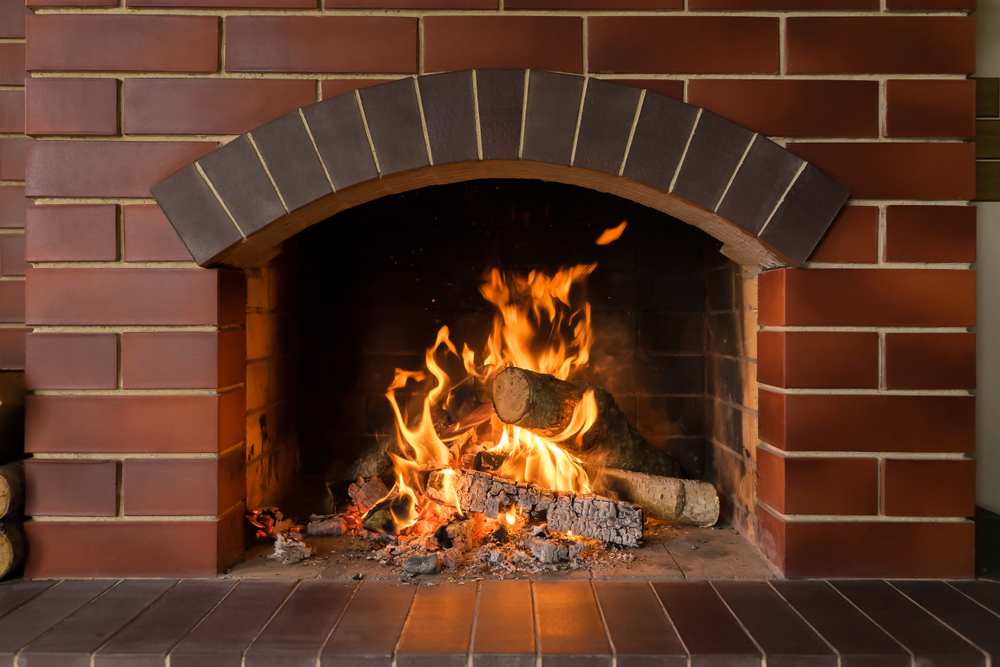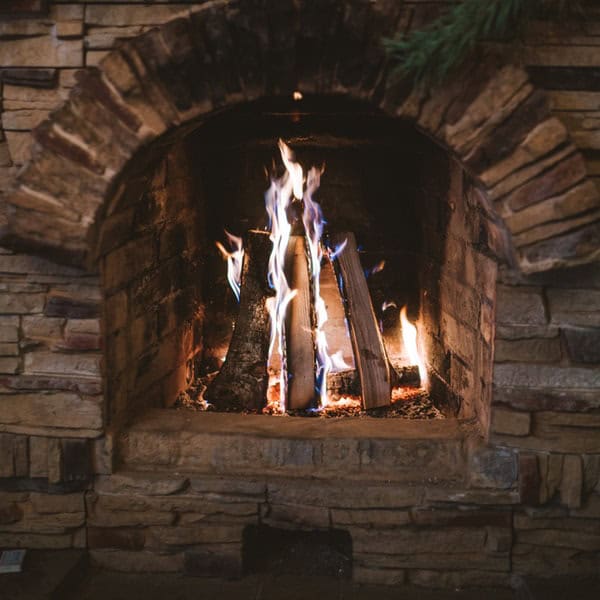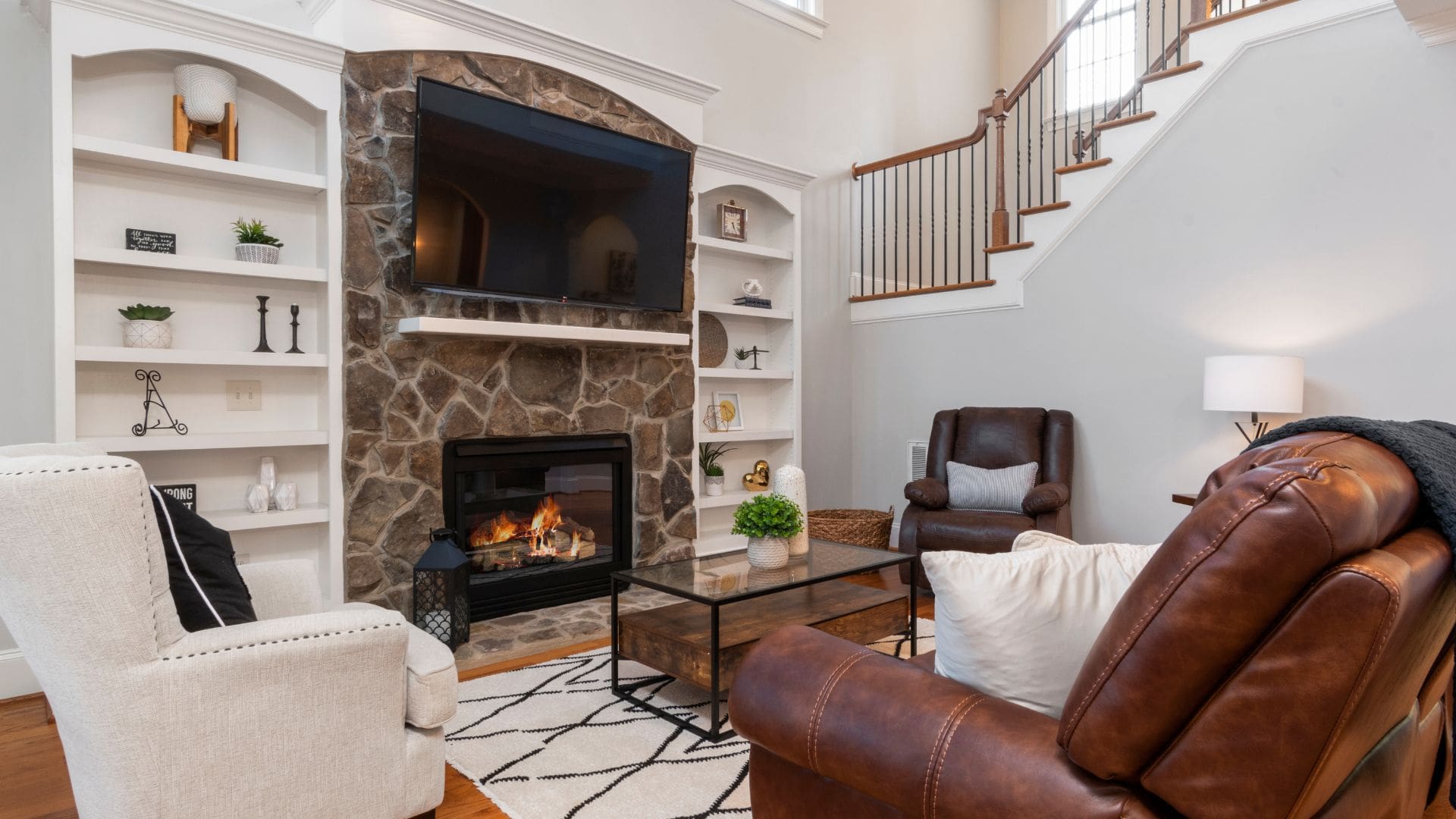Wood-burning stoves and fireplaces create unique maintenance challenges that directly impact your chimney's safety and performance.
Share:

Wood-burning appliances produce significantly more maintenance demands than gas alternatives because of what happens during the combustion process. When wood burns, it releases smoke containing water vapor, carbon particles, and tar compounds that cool and condense on your chimney walls as they rise.
This condensation creates creosote—a dark, sticky substance that’s highly flammable and accumulates with every fire you burn. Gas appliances produce minimal condensation and virtually no creosote, which is why they require less frequent chimney attention.
The more you use your wood-burning stove or fireplace, the faster creosote builds up, directly impacting how often you need professional chimney cleaning and inspection services.

Creosote forms in three distinct stages, each presenting different levels of risk and removal difficulty. First-degree creosote appears as a powdery, flaky substance that’s relatively easy to remove with proper brushing techniques. This stage occurs naturally even with good burning practices and proper maintenance.
Second-degree creosote develops when first-degree deposits aren’t removed promptly. It appears as shiny black flakes or chunks that resemble hardened tar. This stage is more difficult to remove and begins to restrict airflow through your chimney, affecting your stove or fireplace performance.
Third-degree creosote is the most dangerous stage, appearing as a thick, glossy coating that looks like hardened tar. This concentrated buildup is extremely flammable and can ignite at relatively low temperatures. Once creosote reaches this stage, it often requires specialized chemical treatments or professional removal techniques that go beyond standard chimney sweeping.
The progression from first to third-degree creosote happens faster with frequent wood burning, especially when using unseasoned wood or operating your appliance at low temperatures. Massachusetts homeowners who rely heavily on wood heat during cold winters need to understand this progression to maintain safe chimney conditions.
Your burning habits directly influence how often your chimney needs professional attention. Burning wet or unseasoned wood creates more smoke and significantly increases creosote production. Wood with high moisture content doesn’t burn as hot, allowing more unburned particles to condense in your chimney.
Operating your wood stove or fireplace at low temperatures also accelerates creosote buildup. When you dampen down your fire or restrict airflow to extend burn times, you’re creating cooler flue temperatures that promote condensation. Maintaining flue temperatures above 250 degrees Fahrenheit helps minimize creosote formation.
The type of wood you burn matters too. Softwoods like pine produce more creosote than hardwoods like oak or maple. However, even hardwoods will create problems if they’re not properly seasoned. Well-seasoned hardwood should have been split and dried for at least six months, with moisture content below 20 percent.
Your burning schedule also impacts maintenance needs. Homeowners who use wood heat as their primary heating source during Massachusetts winters may need chimney cleaning twice per year, while occasional users might manage with annual service. Heavy users should monitor their chimney condition monthly during heating season.
Massachusetts building codes and safety standards create specific requirements for wood-burning appliance maintenance that directly impact your chimney care schedule. The state requires annual inspections for all solid fuel heating appliances, and many insurance companies mandate professional cleaning before each heating season.
Our harsh New England weather creates additional maintenance challenges that homeowners in warmer climates don’t face. Freeze-thaw cycles can damage chimney masonry, while ice dams can force water into chimney systems, creating conditions that accelerate deterioration.
Local fire departments and building inspectors in Norfolk County, Plymouth County, and Bristol County are familiar with chimney fire risks and often require documentation of proper maintenance, especially for home sales or insurance claims.

Wood-burning appliances require different maintenance timing than gas systems because of their higher impact on chimney condition. The National Fire Protection Association recommends annual cleaning for all wood-burning systems, but Massachusetts homeowners often need more frequent service.
If you use your wood stove or fireplace regularly throughout the heating season, plan for professional chimney cleaning and inspection before each winter. Heavy users—those burning wood daily from October through March—should consider mid-season inspections to monitor creosote levels and ensure safe operation.
Spring cleaning is also important for wood burners. After your final fire of the season, schedule professional cleaning to remove accumulated creosote and soot before warm weather arrives. This prevents moisture from combining with acidic deposits to cause summer damage to your chimney liner and masonry.
Summer is the ideal time for any necessary chimney repair work identified during spring cleaning. Addressing masonry work, liner repairs, or cap replacement during warm weather ensures your system is ready for the next heating season. We offer scheduling advantages and sometimes pricing benefits for off-season work.
Don’t forget about your chimney cap and spark arrestor if you have a wood-burning system. These components work harder with wood appliances and may need more frequent inspection or replacement than with gas systems.
Wood-burning systems create maintenance demands that typically exceed safe DIY capabilities, especially regarding creosote removal. While homeowners can handle basic tasks like ash removal and visual inspections, creosote cleaning requires specialized tools, safety equipment, and expertise that most homeowners don’t possess.
Professional chimney sweep services have the training to recognize different stages of creosote buildup and select appropriate removal methods. We also carry specialized insurance and understand safety protocols for working with flammable deposits. Attempting to remove second or third-degree creosote without proper equipment and training can actually increase fire risk.
Professional chimney inspection also includes comprehensive capabilities that go beyond what homeowners can safely perform. We use video inspection equipment to examine flue interiors, check for structural damage, and identify problems that aren’t visible from ground level or fireplace openings.
However, homeowners with wood-burning systems can perform important maintenance tasks between professional services. Regular ash removal, visual checks for obvious damage, and monitoring of your appliance’s performance help identify issues early. Installing and monitoring a flue thermometer helps ensure you’re maintaining proper temperatures to minimize creosote formation.
Understanding your role versus professional responsibilities helps you maintain a safe system while managing costs effectively. We recommend homeowner monitoring combined with professional service rather than attempting complete DIY maintenance for wood-burning systems.
Wood-burning stoves and fireplaces require more frequent and intensive chimney maintenance than gas alternatives, but understanding these requirements helps you maintain a safe, efficient system. The key is recognizing that creosote production, seasonal weather impacts, and Massachusetts safety standards all influence your maintenance schedule.
Regular professional cleaning, proper burning practices, and attention to your system’s performance indicators help prevent dangerous situations while extending your chimney’s lifespan. When you stay ahead of maintenance requirements, you can enjoy the comfort and ambiance of wood heat without compromising safety.
If you’re experiencing increased maintenance needs with your wood-burning system, or if it’s been more than a year since your last professional service, we can help assess your system’s condition and recommend an appropriate maintenance schedule for your specific situation.
Article details:
Share: